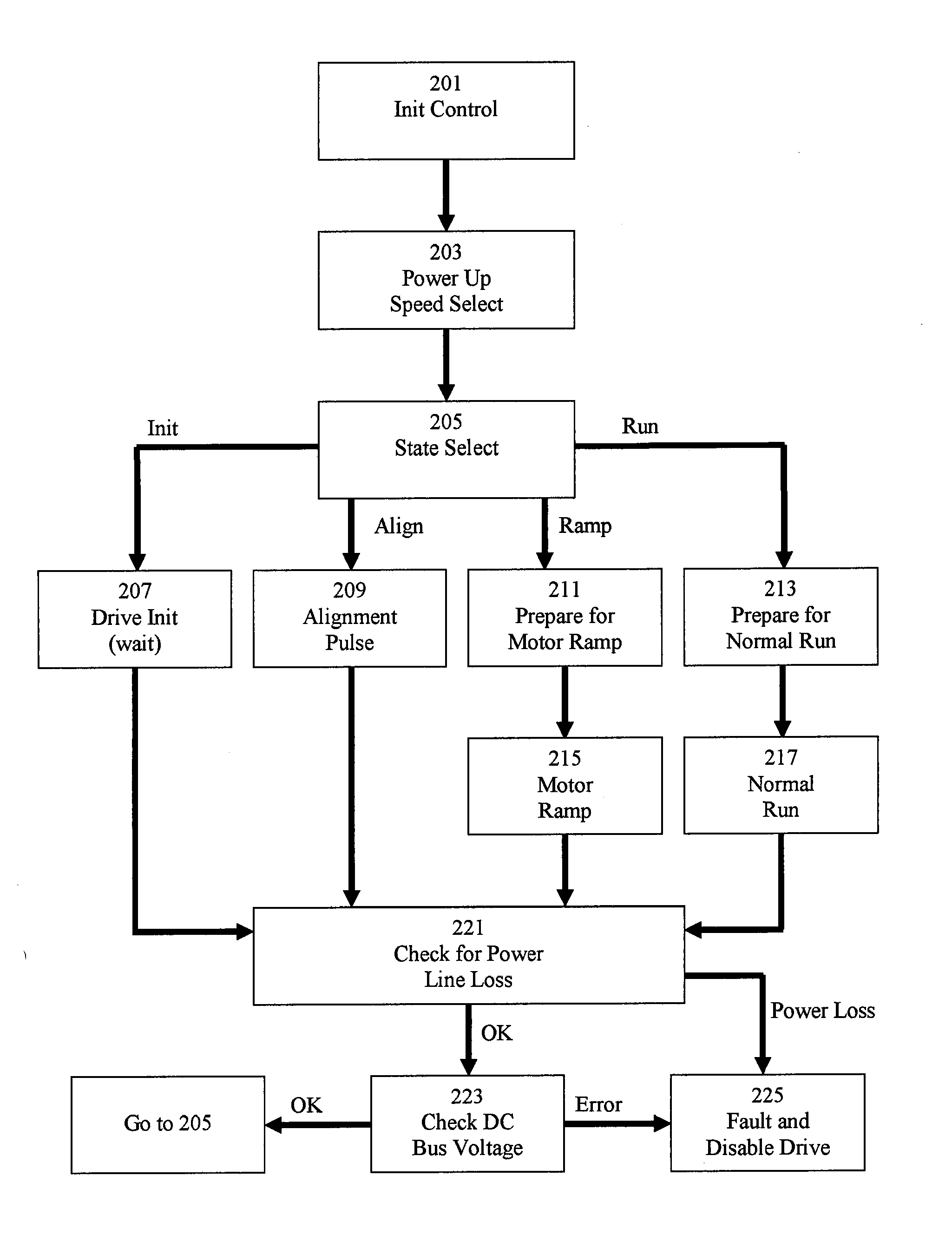Electric Motor and Motor Control
a technology of electric motors and motors, applied in the direction of motor/generator/converter stoppers, electronic commutators, dynamo-electric converter control, etc., can solve the problems of increased cost and complexity, limited pm synchronous motors generally to a single speed, and increased cost and complexity of two-phase and three-phase bpm motors, so as to reduce noise, lower cost, and improve efficiency
- Summary
- Abstract
- Description
- Claims
- Application Information
AI Technical Summary
Benefits of technology
Problems solved by technology
Method used
Image
Examples
Embodiment Construction
[0016]FIG. 1 depicts a block diagram of an exemplary system for controlling an electric motor. The motor control system may be disposed in the same housing as an electric motor, separate from the electric motor, or integrated with a main control system for a device or appliance. The electric motor comprises one or more windings 109. Main microcontroller 101 executes a motor control software program for controlling the power delivered to the winding(s) 109 of an electric motor. Main microcontroller 101 receives position data from Hall sensor 103. As is well known in the art, Hall sensors are designed to detect the proximity of a magnetic pole, and are often used in electric motors to detect the position of a rotor comprising a permanent magnet. The motor control software includes routines for controlling an electric motor based on received input data, including the received position data from the Hall sensor 103. The motor control software generates a drive waveform to be applied to ...
PUM
 Login to View More
Login to View More Abstract
Description
Claims
Application Information
 Login to View More
Login to View More - R&D
- Intellectual Property
- Life Sciences
- Materials
- Tech Scout
- Unparalleled Data Quality
- Higher Quality Content
- 60% Fewer Hallucinations
Browse by: Latest US Patents, China's latest patents, Technical Efficacy Thesaurus, Application Domain, Technology Topic, Popular Technical Reports.
© 2025 PatSnap. All rights reserved.Legal|Privacy policy|Modern Slavery Act Transparency Statement|Sitemap|About US| Contact US: help@patsnap.com



